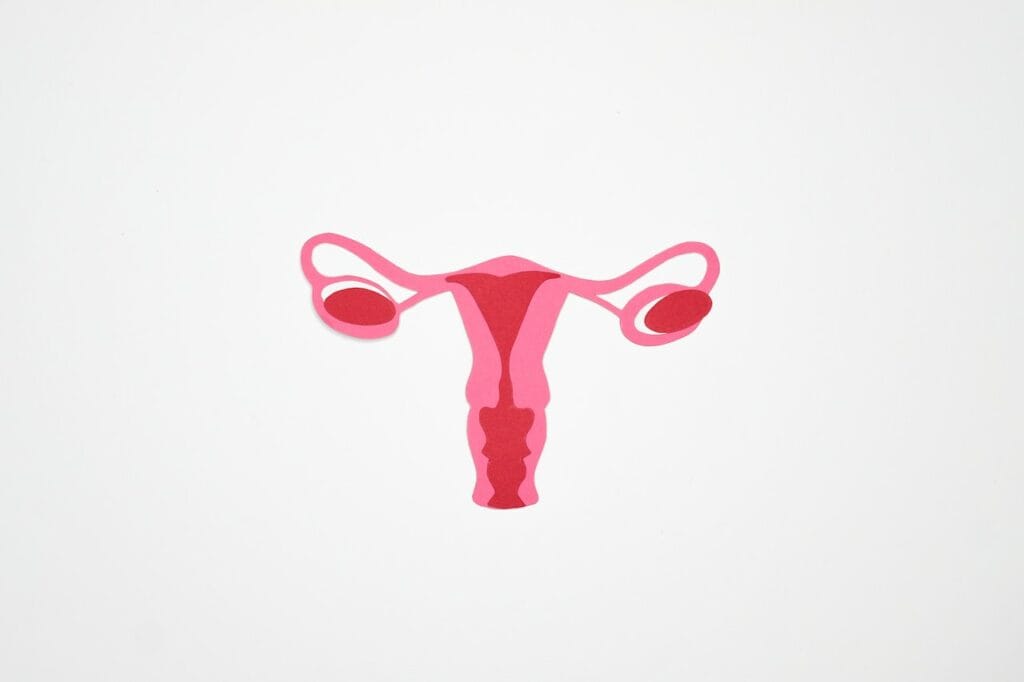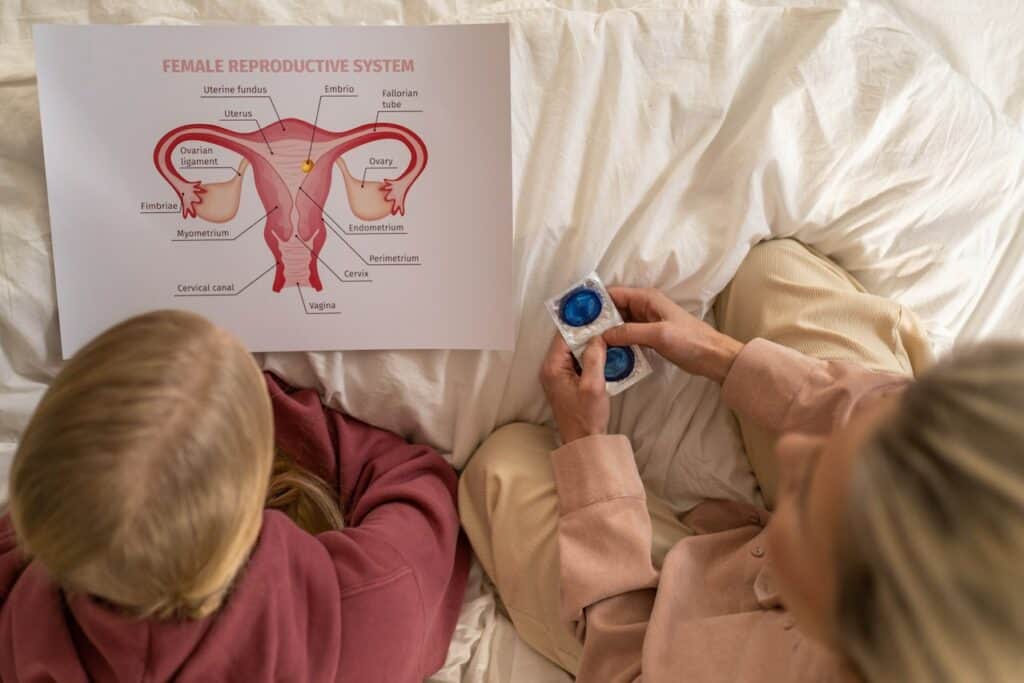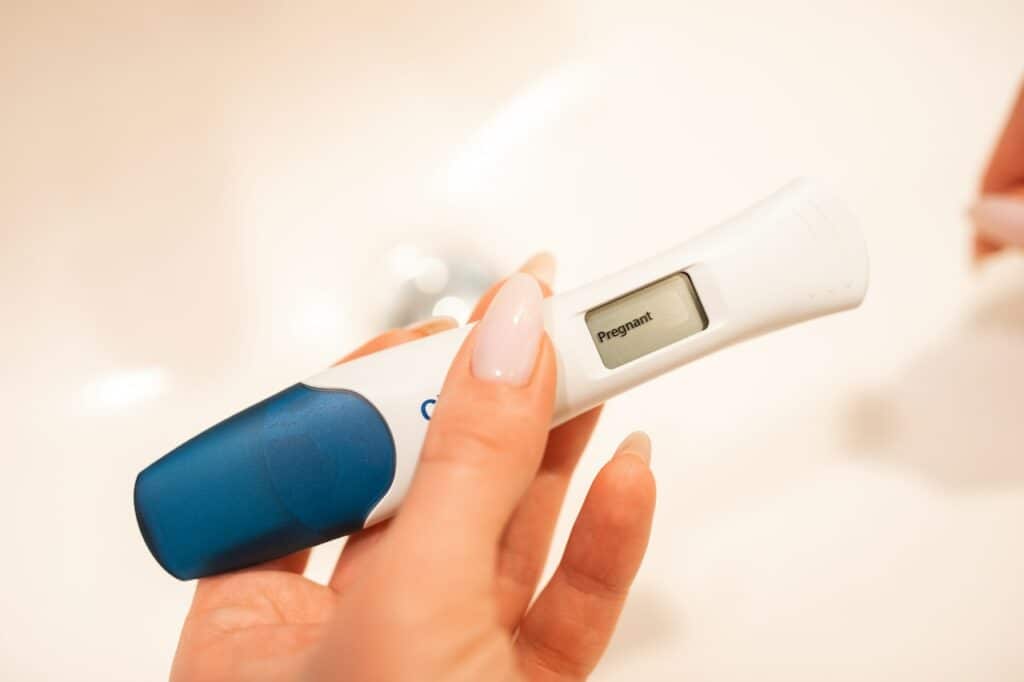Doctors are trained to identify various physical changes in the body that occur during pregnancy. However, can a doctor tell if you’ve been pregnant before? The answer is not straightforward, but medical professionals can detect signs of past pregnancy through various medical examinations and tests.
Understanding Pregnancy
Before delving into the topic, it is essential to understand what pregnancy entails. Pregnancy is a natural process that occurs when a sperm fertilizes an egg, leading to the development of a fetus in the uterus. During pregnancy, a woman’s body undergoes numerous physical changes, including weight gain, breast enlargement, and hormonal fluctuations.
Medical Examination and Tests
Medical professionals can detect signs of past pregnancy through various medical examinations and tests. For instance, a pelvic exam can reveal changes in the uterus and cervix that may indicate a past pregnancy. Additionally, blood tests can detect the presence of pregnancy hormones, such as human chorionic gonadotropin (hCG), in a woman’s bloodstream.
Key Takeaways
- Doctors can detect signs of past pregnancy through medical examinations and tests.
- Pelvic exams and blood tests are two methods used to detect past pregnancy.
- Medical records and history play a crucial role in determining if a woman has been pregnant before.
Understanding Pregnancy
Pregnancy is the process of a fertilized egg implanting in the uterus and developing into a fetus. It is a complex process that involves many different stages and changes in the body.
The first stage of pregnancy is ovulation, when an egg is released from the ovaries and travels down the fallopian tubes. If a sperm fertilizes the egg, it becomes a fertilized egg and begins to divide rapidly.
The fertilized egg then travels down the fallopian tube and into the uterus, where it implants in the lining of the uterus. This process is known as implantation and usually occurs about a week after fertilization.
Once the fertilized egg has implanted, it begins to develop into a fetus. The cells divide and differentiate, forming the various organs and structures of the body. The placenta also begins to form, which provides nutrients and oxygen to the developing fetus.
Throughout pregnancy, the body undergoes many changes to accommodate the growing fetus. Hormones are released to help support the pregnancy and prepare the body for childbirth.
While some changes in the body may be noticeable, such as weight gain and a growing belly, others may not be as obvious. It is possible for a woman to be pregnant and not realize it until several weeks or even months into the pregnancy.
Overall, pregnancy is a complex and fascinating process that involves many different stages and changes in the body. While a doctor may be able to tell if a woman has been pregnant before, it is important to understand the process of pregnancy to fully appreciate its complexity.
Physical Changes During and After Pregnancy
Pregnancy is a transformative experience that brings about many physical changes to a woman’s body. These changes are both temporary and permanent, and may vary from woman to woman. In this section, we will explore some of the most common physical changes that occur during and after pregnancy.
Changes in the Uterus

During pregnancy, the uterus undergoes significant changes to accommodate the growing fetus. It expands from the size of a small pear to the size of a watermelon, and its walls become thicker and more muscular. After delivery, the uterus gradually shrinks back to its pre-pregnancy size over a period of several weeks. This process is known as involution.
Breast Changes

The breasts also undergo significant changes during pregnancy and lactation. They may become larger, more sensitive, and sore to the touch. The nipples and areolas may darken and become more prominent, and small bumps may appear on the areolas. After delivery, the breasts may become engorged with milk, and the nipples may become cracked and sore. Over time, the breasts will return to their pre-pregnancy size and shape.
Body Marks and Scarring

Many women develop stretch marks during pregnancy, especially on the abdomen, thighs, and breasts. These are caused by the stretching of the skin as the fetus grows. While they may fade over time, they are generally permanent. Some women may also develop scars from a cesarean section or other surgical procedures related to childbirth.
Also, read: How To Get Rid Of Stomach Crease Lines
Changes in Cervix and Reproductive Organs

During pregnancy, the cervix softens and shortens in preparation for delivery. After delivery, it gradually returns to its pre-pregnancy state. The vagina may also become more elastic and lubricated during pregnancy, and may take some time to return to its pre-pregnancy state. The ovaries may also be affected by pregnancy, and may temporarily stop releasing eggs.
In addition to these changes, some women may develop a linea nigra, a dark line that runs down the center of the abdomen. This is caused by increased melanin production during pregnancy, and generally fades after delivery.
Overall, pregnancy brings about many physical changes to a woman’s body. While some of these changes may be uncomfortable or unwanted, they are a natural part of the process of bringing new life into the world.
Symptoms and Signs of Past Pregnancy

While a doctor cannot definitively tell if a woman has been pregnant before just by looking at her, there are some signs and symptoms that may suggest a past pregnancy. Some of the most common symptoms of pregnancy include morning sickness, fatigue, spotting, cramping, nausea, and implantation bleeding.
Morning sickness, which is characterized by nausea and vomiting, is one of the most well-known symptoms of pregnancy. While it typically occurs in the first trimester, some women may experience it throughout their entire pregnancy. Fatigue is also a common symptom of pregnancy, as the body works hard to support the growing fetus.
Spotting and cramping may also be signs of a past pregnancy, as they can occur during implantation or as the uterus expands to accommodate the growing fetus. Nausea and vomiting may also be present during implantation bleeding, which occurs when the fertilized egg implants itself into the uterine lining.
It is important to note that not all women experience the same symptoms during pregnancy, and some may not experience any symptoms at all. Additionally, some symptoms may be caused by other factors, such as stress or illness.
Overall, while there are some signs and symptoms that may suggest a past pregnancy, only a woman herself can confirm whether or not she has been pregnant before.
Medical Examination and Tests
When it comes to determining if a woman has been pregnant before, medical examinations and tests can provide valuable information. Here are some of the most common methods used by doctors:

1. Ultrasound Examination
Ultrasound examinations use high-frequency sound waves to create images of the inside of the body. This type of exam can be used to detect signs of a previous pregnancy, such as scarring or abnormalities in the uterus.
2. Blood Tests
Blood tests can also be used to determine if a woman has been pregnant before. Specifically, doctors may look for the presence of human chorionic gonadotropin (hCG), a hormone that is produced by the placenta during pregnancy.
3. Physical and Pelvic Examinations
During a physical examination, a doctor may look for physical signs of a previous pregnancy, such as stretch marks or changes in the shape of the uterus. Pelvic examinations can also provide valuable information about the condition of the uterus and other reproductive organs.
4. Hysteroscopy
A hysteroscopy is a procedure that involves inserting a thin, lighted tube into the vagina and cervix to examine the inside of the uterus. This type of exam can be used to look for signs of scarring or other abnormalities that may be related to a previous pregnancy.
5. Dilation and Curettage
Dilation and curettage (D&C) is a surgical procedure that involves dilating the cervix and removing tissue from the uterus. This type of procedure can be used to diagnose and treat a variety of conditions, including scarring or abnormal tissue growth that may be related to a previous pregnancy.
Overall, while there are several methods that can be used to determine if a woman has been pregnant before, each method has its own strengths and limitations. By working with a knowledgeable and experienced doctor, women can get the answers they need to make informed decisions about their reproductive health.
Medical Records and History
Medical records and history can provide valuable information to doctors when trying to determine if a woman has been pregnant before. When a patient visits a doctor, they will typically be asked about their medical history, including any previous pregnancies. This information can be used to help identify any potential issues that may arise during a current or future pregnancy.

In addition to asking about previous pregnancies, doctors may also review a patient’s medical records. This can include information about any previous pregnancies, as well as any medical conditions that may affect fertility or pregnancy. Medical records can also provide information about any previous miscarriages or abortions, which can be important when assessing a patient’s risk for complications during a future pregnancy.
Doctors may also use medical imaging, such as ultrasounds or X-rays, to help determine if a patient has been pregnant before. These tests can sometimes reveal physical changes in the uterus or other reproductive organs that may indicate a previous pregnancy.
Overall, while medical records and history can provide valuable information to doctors, they are not always definitive. Some women may not have a record of a previous pregnancy, or may not remember if they have been pregnant before. Additionally, not all pregnancies result in a live birth, and some women may have had a miscarriage or abortion without seeking medical attention. As such, doctors must rely on a variety of factors when trying to determine if a patient has been pregnant before.
Special Cases
When it comes to determining whether a woman has been pregnant before, there are some special cases that may affect a doctor’s ability to make a definitive diagnosis. These cases include post-abortion, after C-section, and following ectopic pregnancy.
Post-Abortion
After a woman has had an abortion, it can be difficult for a doctor to determine if she has been pregnant before. This is because an abortion can cause scarring in the uterus, which can make it difficult to see any previous pregnancies. However, in some cases, a doctor may be able to detect scarring or other signs that a woman has been pregnant before.
After C-Section
If a woman has had a C-section, it may be easier for a doctor to determine if she has been pregnant before. This is because a C-section involves making an incision in the uterus, which can leave a visible scar. If a doctor sees a scar during an examination, they may be able to determine that the woman has had a previous pregnancy.
Following Ectopic Pregnancy
An ectopic pregnancy occurs when a fertilized egg implants outside of the uterus, usually in one of the fallopian tubes. If a woman has had an ectopic pregnancy, it can be difficult for a doctor to determine if she has been pregnant before. This is because an ectopic pregnancy does not involve the uterus, so there may not be any visible scarring or other signs of a previous pregnancy.
In conclusion, while there are some special cases that may affect a doctor’s ability to determine if a woman has been pregnant before, in most cases, a doctor can make a definitive diagnosis. It is important for women to be honest with their doctors about their medical history, including any past pregnancies, in order to receive the best possible care.
Role of Hormones in Detecting Past Pregnancy

When a woman becomes pregnant, her body goes through various hormonal changes. These hormonal changes can be detected by a doctor through various tests, such as blood tests and urine tests.
One of the hormones that can be detected in a woman’s body during pregnancy is human chorionic gonadotropin (hCG). This hormone is produced by the placenta and can be detected in a woman’s urine or blood as early as 10 days after conception.
Since hCG is only produced during pregnancy, the presence of this hormone in a woman’s body can indicate that she has been pregnant before. However, it is important to note that hCG can also be present in some non-pregnant women, such as those with certain medical conditions or taking certain medications.
Other hormones, such as progesterone and estrogen, also play a role in pregnancy and can be detected in a woman’s body during pregnancy. However, these hormones are not as specific to pregnancy as hCG and may not be as reliable in detecting past pregnancies.
Overall, while the presence of hCG in a woman’s body can indicate that she has been pregnant before, it is important to consider other factors and medical conditions that may affect the accuracy of this test.
Impact on Future Pregnancies and Fertility
Having been pregnant before can have an impact on future pregnancies and fertility. While it is possible for women who have been pregnant before to have healthy pregnancies in the future, there are certain factors that may affect their ability to conceive or carry a pregnancy to term.

One of the factors that may impact future pregnancies is age. Women who have been pregnant before may be older than they were during their first pregnancy, which can increase the risk of certain complications, such as gestational diabetes, high blood pressure, and preterm labor. Additionally, women who have had multiple pregnancies may experience a weakening of the muscles and ligaments in the pelvic area, which can increase the risk of uterine prolapse and other complications.
In terms of fertility, having been pregnant before does not necessarily mean that a woman will have difficulty getting pregnant in the future. However, certain factors such as age, underlying medical conditions, and lifestyle factors can impact fertility. For example, women who have had multiple pregnancies may be at increased risk of developing conditions such as endometriosis or uterine fibroids, which can impact fertility.
It is important for women who have been pregnant before to discuss their fertility and future pregnancy plans with their healthcare provider. They may be referred to a fertility specialist or advised to make certain lifestyle changes to optimize their chances of conceiving and having a healthy pregnancy. Overall, while having been pregnant before can impact future pregnancies and fertility, it is important to remember that each woman’s experience is unique and should be evaluated on an individual basis.
Role of Healthcare Providers
Healthcare providers, including medical professionals such as doctors, nurses, and midwives, play a crucial role in determining whether someone has been pregnant before. They have access to a variety of diagnostic tools and techniques that can help them identify previous pregnancies.

During a routine medical exam, healthcare providers may ask questions about the patient’s reproductive history, including whether they have been pregnant before. They may also perform a physical exam to check for signs of previous pregnancies, such as stretch marks or changes to the cervix.
In addition to these methods, healthcare providers may also use laboratory tests to detect pregnancy-related hormones in the blood or urine. These tests can provide valuable information about a patient’s previous pregnancies, including how far along they were and whether there were any complications.
It’s worth noting that while healthcare providers can often detect previous pregnancies, there may be cases where this information is not readily available. For example, if a patient had a very early miscarriage or terminated a pregnancy very early on, there may be no physical or laboratory evidence of the pregnancy.
Overall, healthcare providers play an important role in identifying previous pregnancies and providing patients with the information and support they need to make informed decisions about their reproductive health.
Related post: Is Implantation Bleeding Heavier with Twins? Exploring the Possibility
Frequently Asked Questions
Can a doctor tell if you’ve had a previous pregnancy?
Yes, a doctor can tell if you’ve had a previous pregnancy. During a routine gynecological exam, a doctor can often detect signs of a previous pregnancy, such as changes to the cervix or uterus.
Can a gynecologist tell if you’ve had a miscarriage in the past?
In some cases, a gynecologist may be able to tell if you’ve had a miscarriage in the past. During a pelvic exam, a doctor may detect scarring or other signs that suggest a previous miscarriage. However, not all miscarriages leave visible signs, so it’s not always possible to tell.
Can you hide a past abortion from your midwife?
It’s important to be honest with your midwife about any past abortions. Your medical history can impact your current pregnancy, and your midwife needs to be aware of any potential risks or complications. If you’re uncomfortable discussing your past abortion, you may want to consider finding a new healthcare provider.
Will a previous abortion show up in medical records?
Your medical records may include information about past abortions, but this information is confidential and protected by law. Healthcare providers are required to keep your medical information private, so you don’t need to worry about your past abortion being disclosed without your consent.
Can a doctor tell if a woman has given birth?
Yes, a doctor can often tell if a woman has given birth. During a pelvic exam, a doctor may detect changes to the cervix or uterus that suggest a previous delivery. Additionally, a woman’s medical history may include information about previous pregnancies and deliveries.
How can a doctor determine if you’ve had a baby before?
A doctor can determine if you’ve had a baby before by performing a pelvic exam and reviewing your medical history. During the exam, the doctor may detect changes to the cervix or uterus that suggest a previous delivery. Additionally, your medical history may include information about previous pregnancies and deliveries.

Iesha is a loving mother of 2 beautiful children. She’s an active parent who enjoys indoor and outdoor adventures with her family. Her mission is to share practical and realistic parenting advice to help the parenting community becoming stronger.
